Liberty Times: The government announced the construction of the plant’s No. 1 reactor “will not continue,” but still go through safety checks after which it will be “sealed up,” and that the construction of the No. 2 reactor will be “suspended.” Can these measures be carried out?
Ho Li-wei (賀立維): From a technical standpoint, whether it said “will not continue,” “sealed up” or need to “pass safety inspections,” all of these are just playing word games.
Even taking another five years, or 10 years, the Fourth Nuclear Power Plant [in Gongliao District (貢寮), New Taipei City] would not be completed because it has several inherent critical issues.
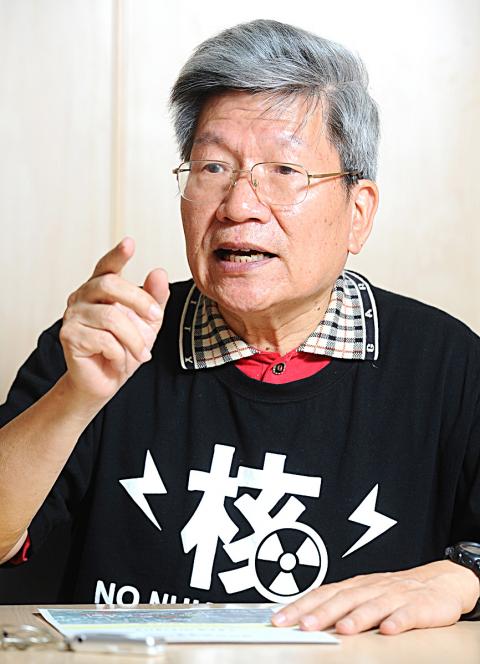
Photo: Chang Chia-ming, Taipei Times
An incident reported in April 2002, where the contractors were found to have used inferior steel rebar in building the No. 1 reactor’s pedestal. More than a dozen people were indicted in that case. Construction of this quality could topple in a big earthquake. Even if it did not fall, much of its piping and wiring would be stretched, ripped apart and broken. This would cause many fatalities.
When nuclear fuel rods are inserted into the reactor, there might be no major problems immediately. Maybe they would happen after a few years of operation. Because the reactor will undergo physical contraction and dilation due to temperature variations, there is also the problem of material fatigue.
When a big earthquake hits, a tiny hairline fissure may extend open into a large fracture, which would be a big disaster.
There is also a major concern over penetration of the nuclear reactor containment wall. When fuel rods start the nuclear chain reaction, the rate is about 1 million reactions per second. The heat and radiation generated are constrained by a 1m-thick wall. Around the containment building are numerous vents. If these are built with inferior materials, are shoddily constructed or are not sealed to the required thickness, then radiation could leak out.
LT: President Ma Ying-jeou’s (馬英九) administration stressed the plant’s start-up operation will depend on the result of a public referendum. If the plant was sealed up, would it be possible for operations to restart?
Ho: Taiwan’s first, second and third nuclear power plants were turnkey projects by the contractor company. For example, if General Electric had already built 100 nuclear power plants, then Taiwan was its 101st plant. The project and its testing were standardized. However, construction of the Fourth Nuclear Power Plant was divided among different contractors.
The Ma administration said that after undergoing safety inspection, the plant will be sealed up. However, without inserting fuel rods, without producing steam, without power generation and without producing radiation, how do you conduct safety inspections? At the most, the plant’s structures can be checked to see if there are plastic bottles in the cement mixture. For most of the machinery and the electrical circuits, all that can be done is “cold testing.”
Nuclear fission produces steam from water; the reactor is known as a “nuclear steam generator.” Steam is needed to generate circulation, which rotates a turbine. Without the steam, how can you do testing?
Inspection is also needed to detect possible radiation leaks. When the fuel rod is bombarded with neutrons, the nuclear fission process produces gamma-ray radiation. Fuel rods have to be inserted to make radiation detection tests meaningful and to find any leaks in the plant. The reactor’s control rod is a powerful absorber of neutrons; it acts like the brake in a car. It is to prevent neutrons from starting a chain reaction. This also cannot be checked without starting operations at the plant.
After sealing up the plant, the piping and wire lines will age and it will be difficult to buy replacement parts. So it is an awful mess.
The Fourth Nuclear Power Plant is [Taiwan Power Co] Taipower’s own brand — designed by foreigners and built by Taiwanese. Not only that, numerous construction scandals have been uncovered, so who dares to use it?
There is also the issue of the plant’s fuel rods, which have specifications differing from the No. 1, No. 2 and No. 3 plants. The fuel rods being purchased for it cannot be transferred for use at the other three plants.
LT: Taipower claims that if the plant is to stop construction, Taipower would go bankrupt. What are your views on this?
Ho: Taipower is the one agency most fearful of the Fourth Nuclear Power Plant beginning operations, because it wants to hide the ugly truth from the public. Construction of the plant has been delayed six times, with the delays ranging from half a year to three years. Each delay has seen a bunch of senior executives from Taipower’s nuclear power division retire. Every Taipower official is afraid of being the last white mouse remaining in this experiment.
No one wants to be in charge when the plant starts operation and things go wrong. Why? It is because the Fourth Nuclear Power Plant has seen more than 1,000 design changes. Forget about building a nuclear power plant, just consider the construction of buildings. In building a high-rise, making one design change takes three months to go through the normal process of government approval by the construction management agency.
With more than 1,000 design changes, the approval process should take more than 40 years. Has the Atomic Energy Council taken such time to scrutinize and approve the changes? No, it has not.
Actually, if Taipower goes bankrupt, that would be a good thing. Taiwan then can develop its own public power stations. Consumers can choose to buy electricity from the source that offers the best price under the most suitable conditions. Internationally, the average lifetime for a nuclear power plant is about 30 years. Taiwan’s No. 1 plant has been in operation for 35 years. It should have already provided value for money.
LT: What is next for the Fourth Nuclear Power Plant? Are there other ways it can be used?
Ho: According to experience in the US, the cost of decommissioning a nuclear power plant is three times as much as building it. That is not including the money needed for treating nuclear waste. Taiwan should learn from the experiences of other countries. If it wants to generate electricity, it should consider converting the plant into a natural gas facility. That way, some portion of the investment can be recovered.
The existing machinery can be used to generate power from natural gas. As long as there is steam to drive the turbines, electricity can be generated. There are many successful cases in other countries in which nuclear power plants have been converted to natural gas plants.
There was one case in which a nuclear power plant was sealed up before being converted. The Philippines in 1984 was building a nuclear power plant in Bataan Province, about 100km west of Manila. Its construction was completed and fuel rods were ready to go in to the reactor to start the operation. However, Ukraine’s Chernobyl nuclear power plant explosion happened. Due to safety considerations, the Philippine government decided to shut the plant down.
Construction on the plant began during the rule of [former Philippine president] Ferdinand Marcos and was halted during the administration of [former Philippine president] Corazon Aquino, but its debt was being paid for more than 20 years after is was mothballed. The Bataan plant was in a similar situation to the ones in Taiwan — built on a volcanic island with risks from earthquakes and being hit by tsunami. It was 100km from Manila, but the Fourth Nuclear Power Plant is only 30km from Taipei, so people are in even more danger here.
LT: What do you recommend for the future direction of Taiwan’s energy needs?
Ho: Treatment for nuclear waste comes in three phases. First, after taking the spent nuclear fuel out of the reactor, it is deposited in a storage pool to cool down for five to 10 years. Second, it is placed into either dry or wet storage. For example in the US, spent fuel is stored for 40 to 60 years in desert areas or remote places far away from human populations. Third, it is buried deep underground for 100,000 years, sometimes up to 1 million years.
Plutonium-239 has a half-life of 24,100 years. Four half-lives is 100,000 years. One nuclear fuel rod is only good for five years of use generating power, but future generations will have to look after the waste for more than 100,000 years, up to 1 million years. This defies logic. Looking at the need to maintain more than 400 nuclear power plants worldwide in operation, uranium deposits will be exhausted in the future. To prevent pollution problems, the government of Australia has decided to stop exploration and excavation of uranium ores.
Taiwan has more effective sunshine days than Germany [for developing solar energy], and it is also suitable for wind power generation.
However, the drive to develop alternative and sustainable energy sources has been suppressed because the government wants to uphold the “political correctness” of maintaining nuclear energy.
There is one big plus, if the Fourth Nuclear Power Plant is halted and Taiwan’s energy policy is returned to “natural normal conditions,” then the opportunity to develop sources of sustainable energy arises.
Translated by staff writer Jason Pan
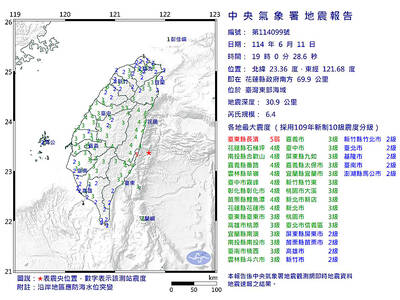
A magnitude 6.4 earthquake struck off the coast of Hualien County in eastern Taiwan at 7pm yesterday, the Central Weather Administration (CWA) said. The epicenter of the temblor was at sea, about 69.9km south of Hualien County Hall, at a depth of 30.9km, it said. There were no immediate reports of damage resulting from the quake. The earthquake’s intensity, which gauges the actual effect of a temblor, was highest in Taitung County’s Changbin Township (長濱), where it measured 5 on Taiwan’s seven-tier intensity scale. The quake also measured an intensity of 4 in Hualien, Nantou, Chiayi, Yunlin, Changhua and Miaoli counties, as well as
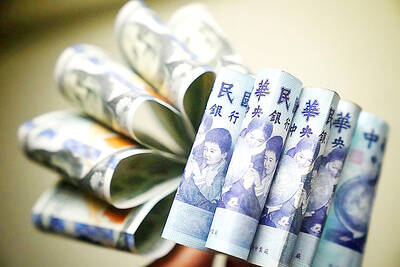
Credit departments of farmers’ and fishers’ associations blocked a total of more than NT$180 million (US$6.01 million) from being lost to scams last year, National Police Agency (NPA) data showed. The Agricultural Finance Agency (AFA) said last week that staff of farmers’ and fishers’ associations’ credit departments are required to implement fraud prevention measures when they serve clients at the counter. They would ask clients about personal financial management activities whenever they suspect there might be a fraud situation, and would immediately report the incident to local authorities, which would send police officers to the site to help, it said. NPA data showed
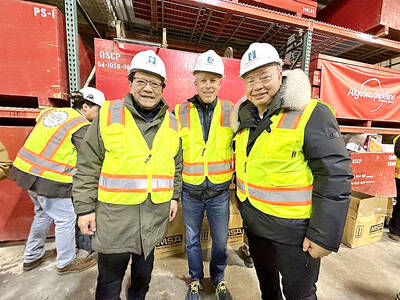
ENERGY RESILIENCE: Although Alaska is open for investments, Taiwan is sourcing its gas from the Middle East, and the sea routes carry risks, Ho Cheng-hui said US government officials’ high-profile reception of a Taiwanese representative at the Alaska Sustainable Energy Conference indicated the emergence of an Indo-Pacific energy resilience alliance, an academic said. Presidential Office Secretary-General Pan Men-an (潘孟安) attended the conference in Alaska on Thursday last week at the invitation of the US government. Pan visited oil and gas facilities with senior US officials, including US Secretary of the Interior Doug Burgum, US Secretary of Energy Chris Wright, Alaska Governor Mike Dunleavy and US Senator Daniel Sullivan. Pan attending the conference on behalf of President William Lai (賴清德) shows a significant elevation in diplomatic representation,
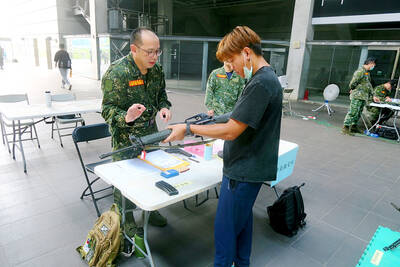
The Taipei City Reserve Command yesterday initiated its first-ever 14-day recall of some of the city’s civilian service reservists, who are to undergo additional training on top of refresher courses. The command said that it rented sites in Neihu District (內湖), including the Taipei Tennis Center, for the duration of the camp to optimize tactical positioning and accommodate the size of the battalion of reservists. A battalion is made up of four companies of more than 200 reservists each, it said. Aside from shooting drills at a range in New Taipei City’s Linkou District (林口), the remainder of the training would be at